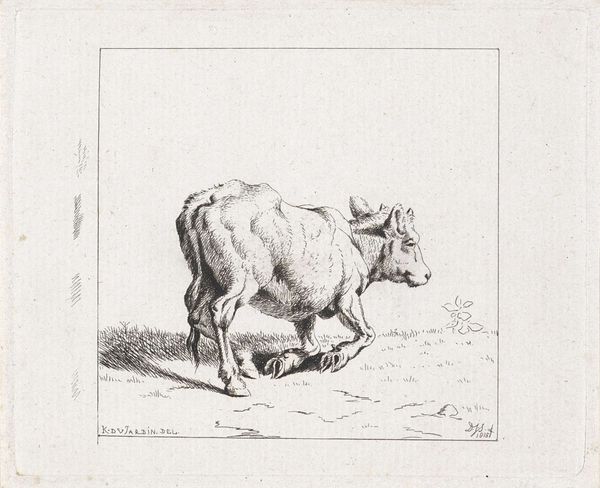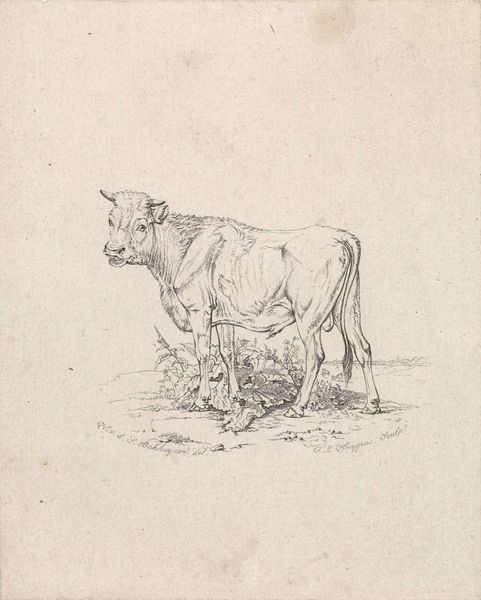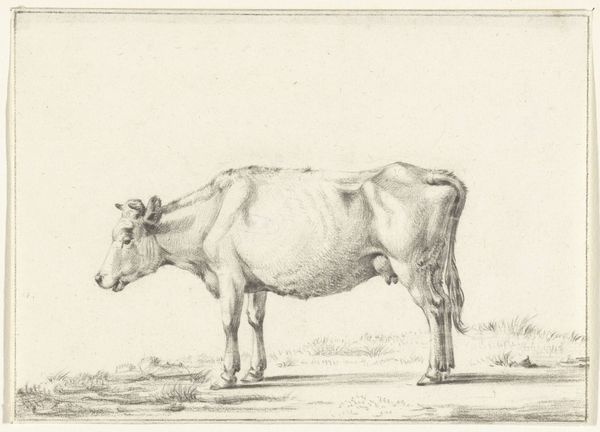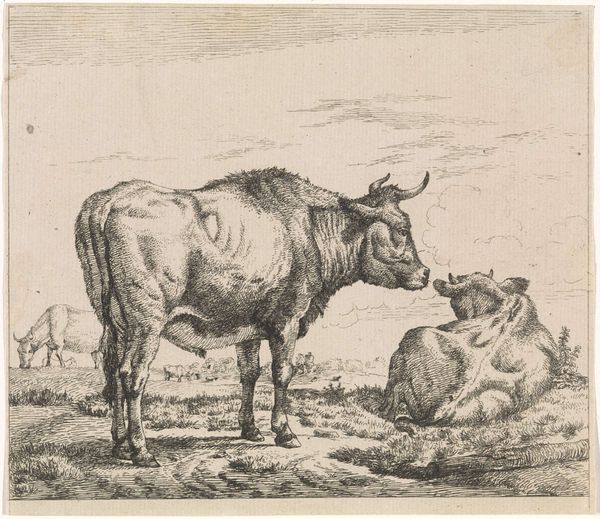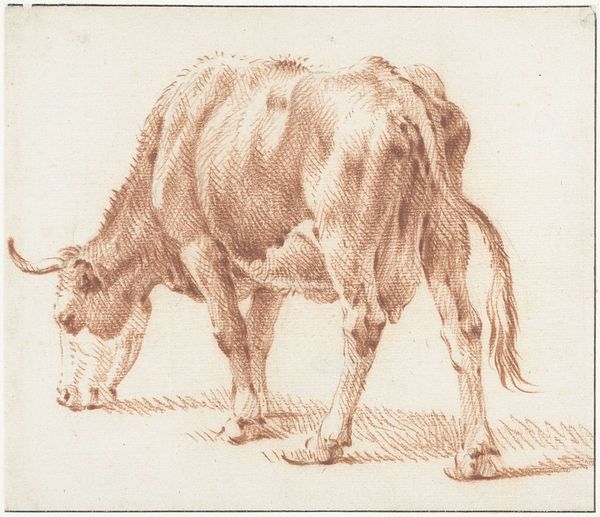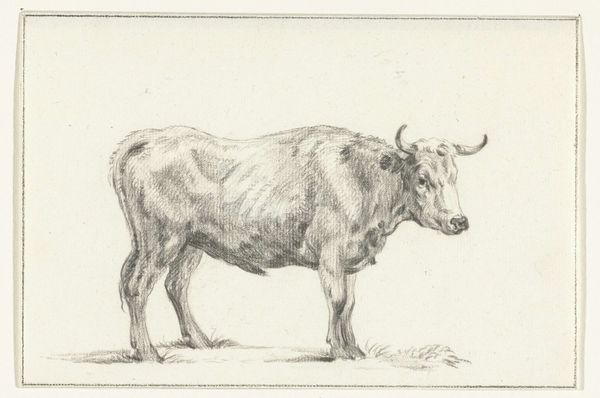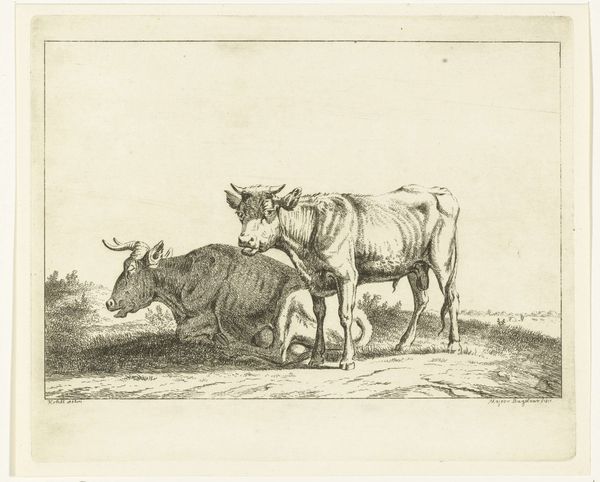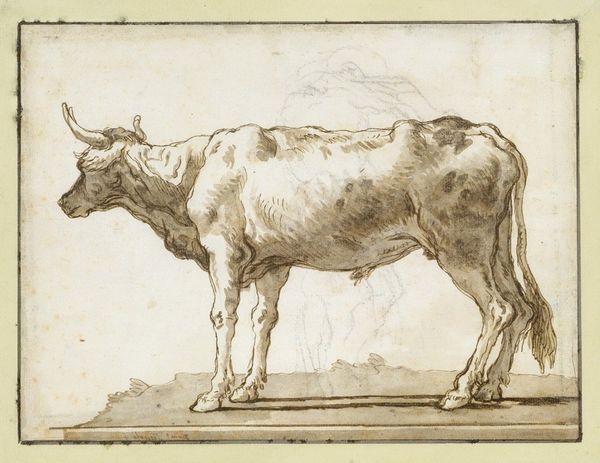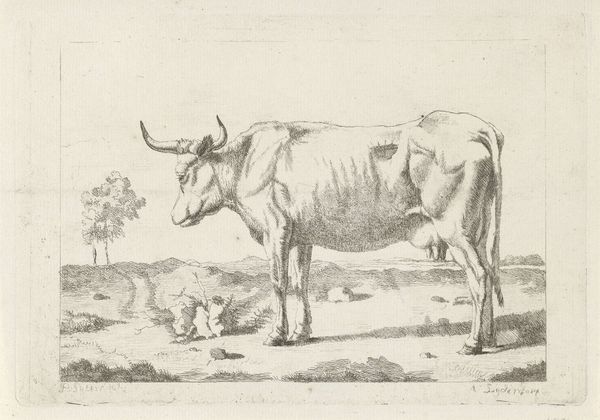
drawing, pencil
pencil drawn
drawing
amateur sketch
toned paper
light pencil work
pencil sketch
old engraving style
landscape
personal sketchbook
pencil drawing
romanticism
pencil
sketchbook drawing
pencil work
genre-painting
realism
Dimensions: height 300 mm, width 259 mm
Copyright: Rijks Museum: Open Domain
Editor: So, this is "Grazende stier," or "Grazing Bull," by Jan (II) Kobell, created sometime between 1788 and 1814. It's a pencil drawing, and I'm struck by the artist's attention to the animal's form. It’s quite detailed, especially considering the simple medium. What elements of the composition stand out to you? Curator: The success of this work, to me, lies within its structural integrity. Notice the meticulous application of lines to delineate the form of the bull, particularly how the artist has employed hatching and cross-hatching to model the musculature and bony structure. Are you observing the play of light and shadow achieved through these means? Editor: Yes, I see how the pencil work creates volume and depth, particularly along the back and ribs. Curator: Precisely. Furthermore, consider the composition. The bull occupies a significant portion of the frame, creating a sense of immediacy and presence. The use of a toned paper allows for a subtle range of values in the pencil work. The stark simplicity eliminates distractions; foreground, middleground, background... the planes work together to keep the attention locked on the figure of the bull. The artist compels us to focus on the essence of the subject, wouldn't you agree? Editor: I do. I hadn't thought about the tonal range being amplified by the choice of paper. Focusing on just the form reveals the care and skill that went into even a seemingly simple sketch. It's made me appreciate how even limited color schemes can produce interesting work. Curator: Indeed. It showcases how a mastery of form and line can be inherently expressive, even in the absence of vivid colors or elaborate details. Editor: Looking closely at the formal aspects definitely highlights how considered each mark must have been, informing the artistic vision and aesthetic intention of the piece.
Comments
No comments
Be the first to comment and join the conversation on the ultimate creative platform.
